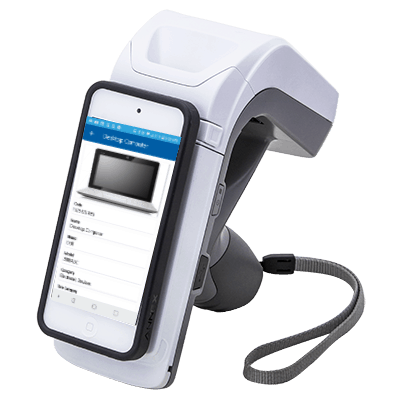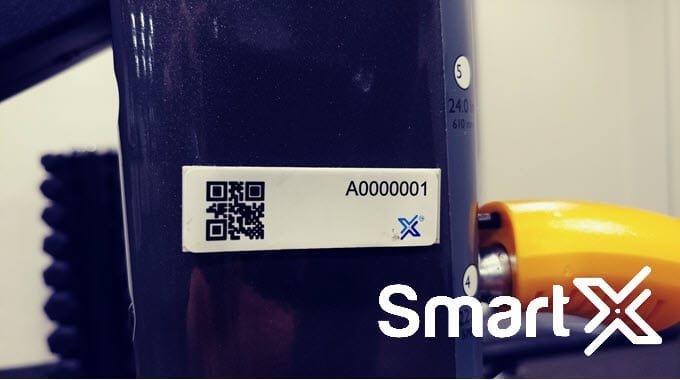Manufacturing Automation Optimized With RFID
Manufacturing Automation Optimized With RFID RFID tags facilitate the seamless transmission of data alongside a product, enriching the information as
Track asset performance, execute maintenance and service, and maximize uptime with advanced technologies.
Deliver as promised with risk-resilient, reliable, and sustainable logistics operations.
A revolutionary convergence of personal and process safety that improve efficiency, safety and reliability.

RFID uses radio frequency to store and retrieve information from RFID tags remotely. RFID is similar to barcodes but with greater functionality.
RFID tags can be placed on nearly any object and read from various distances based on the tag type, using either handheld RFID readers or a fixed RFID reader combined with an antenna. And RFID overcomes some of the limitations of barcodes because RFID tags do not need to be in the line of sight of a reader to be read, making for a much faster and more accurate inventory-taking process. For example, rather than having to turn over a piece of equipment and scan the barcode with a barcode scanner, users of RFID can wave a handheld RFID reader past the equipment, and it will read the tag, even if the tag is hidden underneath the equipment. What typically takes minutes can take seconds with RFID.
An RFID system consists of the following components:
>>Programmable RFID tags that contain unique identification information
>>An antenna that enables the reading and writing of data on the RFID tag
>>Readers that scan the tags and reads their information RFID software that makes sense of the information on the tag
>>RFID tags can be passive, battery-assisted, or active.
Passive tags have no internal power source; whereas battery-assisted and active tags are usually powered by a small battery to help tags transmit data to and from a reader. Battery-assisted and active tags typically have longer read ranges but are more expensive due to an onboard battery and their internal complexity. Tag choice typically refers to a company’s specific application and budgetary constraints.
RFID readers essentially play the same role as a barcode scanner. However, whereas a barcode scanner generally captures information one barcode at a time, an RFID reader can simultaneously capture multiple tags within its transmission field. There are two types of RFID readers: mobile and fixed. Mobile readers are usually employed as peripheral devices on a handheld terminal. They can be carried to the scanning location and used “in the field” or remote locations. Fixed readers may support one or more external antenna, and when RFID-tagged items pass by the antenna (a portal on a doorway, for example), the reader automatically captures data from the tags.
Information collected by RFID readers must be correctly interpreted before it can be of much use to an organization’s business processes. When multiple tags are within a reader’s transmission range, the result is a cacophony of responses with data that must be managed and processed orderly. This is where RFID software comes in. The exact function that RFID software performs varies according to the application that it is designed to support. A comprehensive asset management application, for example, collects the tag data, makes sense of it, and translates it into actionable information for managing assets.

Although RFID has the potential to be the ideal technology for tracking IT assets, not all RFID solutions are the same. Further, RFID technology without asset management software only tells the user that a tag has been read. It doesn’t provide the information necessary for an organization to gain a holistic view of their assets, and as a result, better track their movements and manage how they are used.
Some companies have enterprise-class management software that tells them the location of their assets, but only when these assets are plugged in and are on the company’s network. If these same assets are unplugged from the network or if they’ve been physically removed from the building, this software cannot track the assets. RFID-enabled asset management software provides 24/7 visibility to assets, whether they are in the building, plugged into the network, or in a remote location and off the network.
SmartX HUB™ AssetTrack is one example of organizations increasingly employing asset management software to improve their tracking capabilities and knowledge.
SmartX HUB AssetTrack is cost-effective RFID-enabled software that allows users to monitor and track the movement and status of valuable IT assets in real-time, resulting in more accurate physical inventories with less manual labor.
This software application works in conjunction with a myriad of RFID tags and readers to provide an end-to-end asset management solution. Because it is completely platform- and hardware-independent software, it is flexible and scalable and can evolve as a company’s needs develop and change.
The software is also browser-based, meaning that it can be easily deployed on a central computer and doesn’t need to be loaded on each desktop or laptop to use the application. It can simply be accessed throughout the entire organization using a common internet browser such as Internet Explorer. IT assets can also be tracked from multiple contact points throughout the company, including locations in the field or from the homes of telecommuting employees. This helps to reduce training and deployment costs of the application.
Software such as AssetTrack provides access to historical data, validates asset utilization, maintains asset inventories, allows users to identity deviations from expected asset location or condition, and when combined with the appropriate RFID hardware, triggers automatic alerts when deviations occur.
Scalable and flexible, AssetTrack is built on a very robust, independent platform, making it possible for organizations to migrate from barcode-based systems because it reads barcodes as well as RFID tags (and can do so simultaneously). The system remains flexible as an organization grows and its needs change. Companies wishing to migrate from a legacy system to an RFID-enabled asset management system can integrate SmartX HUB AssetTrack with the existing system, thereby preserving their investment while enhancing their asset-tracking processes.
RFID is a cutting-edge solution that answers age-old business problems. However, organizations should thoroughly examine their business processes and needs before moving forward on an RFID-enabled management solution.
What is the Business Need?
The first order for any business is to fully understand what it will take to implement an automated asset management solution? If those driving the project fail to understand the business need for implementing an automated asset management system, it will be difficult for them to persuade the individuals or departments responsible for approving the implementation. To get their hands around the solution and problem, companies should begin by determining the desired ROI. Also, they must understand the cost and time involved with implementing an automated asset management system. It is often helpful for companies to speak to different vendors that offer asset management solutions, and even interview their customers.
Is RFID Right for Me?
RFID may seem too advanced for some organizations. If they have only a handful of assets to manage or their assets are not of high value, they might want to stick with a barcode-based system, since it is a less expensive option. These organizations can easily upgrade to a flexible RFID-based solution when the time is right. The first step in moving ahead with RFID and asset management software is to develop a firm grasp of its components, benefits, challenges and applications. For companies that want to save long-term time and money on asset management, it is necessary to understand which assets need to be managed. Many organizations are amazed that once an efficient system is found, how much easier it is to track their IT assets.
Is this Solution Scalable?
If an organization is ready to take advantage of the automated asset-tracking benefits of RFID, it should absolutely invest in a scalable solution that will grow and evolve with its needs. Some RFID-based solutions have a sweet spot in terms of the number of assets they can capably manage, the number of sites they can support, etc. Organizations should evaluate their current and future needs and map them to the competencies of the solution before investing in the technology. This way, they can avoid unexpected and costly overhauls or rip-and-replace situations down the road.
How Flexible is this Technology?
RFID and asset management technology is anything but stagnant, so it can be risky and expensive for organizations to invest in proprietary technology, as opposed to a more open solution. Since proprietary technology only works with certain systems, it diminishes the pool of software and hardware options available to an organization. As a result, it might not be able to mix and match the best technologies for its particular situation. Organizations should focus on finding technologies that can support their needs today, but be flexible enough to address their needs tomorrow. Ideally, companies should find an RFID-enabled asset management solution that is flexible enough to work with barcodes, passive, battery-assisted, and active RFID is hardware and platform agnostic, requires little integration, and is compatible with their existing IT systems.

By investing in and implementing an automated asset management solution, companies can profit from 24/7 visibility of the status and location of their IT assets. This control significantly diminishes the potential for stolen, misplaced or mismanaged assets, which means companies can focus their efforts on managing and growing their business, rather than mitigating the damage caused by the inefficient use or loss of IT assets and proprietary information. RFID is the technology of today and the ROI from RFID-enabled asset management is materializing quicker than ever. For instance, on average, companies that have invested in SmartX HUB’s RFID-enabled asset management solution see a return on their investment within the first 12 months.
Best-in-class software and powerful industry-standard RFID technology combine to make SmartX HUB the leading RFID asset tracking solution, with over 250 organizations worldwide experiencing the benefits of our solution within their enterprise. Our RFID technology offers companies and organizations the benefit of ensuring compliance, increasing the visibility of your assets, strengthening security and streamlining auditing processes.
By automating your processes with SmartX HUB RFID-IoT technology, you can cut daily operational costs by significantly reducing labor and error costs through process automation. SmartX HUB offers a scalable, customizable and simple platform, easily fitting into your unique business process. To make it even easier, SmartX HUB runs on any web browser as well as any Windows, iOS or Android device.
SmartX HUB’s global presence, coupled with its deep industry and business transformation expertise, has proven that the methodologies and experience gained from thousands of worldwide engagements help clients achieve real business results and innovation quickly and cost-effectively.
Contact us to get more information on how we can help you overcome the challenges to your business or to check out a free demo.
Contact us at the SmartX office nearest to you or submit a business inquiry online.
Let us know how we can help you solve your business challenges!
Manufacturing Automation Optimized With RFID RFID tags facilitate the seamless transmission of data alongside a product, enriching the information as
IoT Ecosystem Empowerment: Advancing Workplace Safety and Efficiency with RTLS The Internet of Things (IoT) has arrived In the dynamic
California’s regulations for preventing heat-related illness in outdoor workers Introduction In situations involving high temperatures or extreme heat, it is
Organizations large and small and across industries can leverage RTLS to improve safety, safeguard materials and work more efficiently.
Discover how your peers are benefiting from real-time visibility.